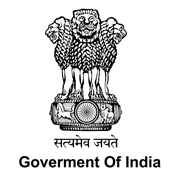About | GOVERNMENT OF INDIA (Govt of India) , All INDIA Check here latest notification
The Government of India, also known as the Union Government or the Central Government, is the governing authority of the Republic of India. It operates under a federal structure, with a central authority at the top and individual states with their own governments.
Structure
1. Executive Branch
- President of India: The President is the head of state and the supreme commander of the armed forces. The role is largely ceremonial, but the President has significant reserve powers.
- Prime Minister: The Prime Minister is the head of government and exercises most executive powers. The Prime Minister is usually the leader of the majority party in the Lok Sabha (House of the People).
- Council of Ministers: Appointed by the President on the advice of the Prime Minister, the council includes Cabinet Ministers, Ministers of State, and Deputy Ministers.
2. Legislative Branch
- Parliament: The Parliament of India is a bicameral legislature, consisting of:
- Rajya Sabha (Council of States): The upper house, members are elected by the elected members of state legislative assemblies and by the members of the Electoral college for Union Territories, and some are appointed by the President.
- Lok Sabha (House of the People): The lower house, members are directly elected by the people of India. It is the more powerful of the two houses in terms of legislative power.
3. Judicial Branch
- Supreme Court of India: The highest judicial body, which ensures the constitutionality of laws and resolves disputes between the central government and states.
- High Courts: Each state or group of states has a High Court.
- Lower Courts: District and Sessions Courts function at the district level.
Key Features
- Federal Structure: India is a federal union comprising 28 states and 8 Union territories. Each state has its own government, which functions independently in matters allocated to it under the Constitution.
- Constitution: The Constitution of India, adopted in 1950, is the supreme law of the land, laying down the framework demarcating fundamental political code, structure, procedures, powers, and duties of government institutions.
- Secular State: The government treats all religions equally and does not have an official state religion.
- Democratic Republic: India is a democratic republic where the President is the head of state, and the Prime Minister is the head of government. Regular elections are held for various legislative bodies.
Functions
- Legislation: Enacting laws on subjects enumerated in the Union List (central government) and Concurrent List (both central and state governments).
- Policy Formulation: Creating policies on national issues like defense, foreign affairs, and economic development.
- Administration: Managing the country’s administration through various ministries and departments.
- Judiciary: Ensuring justice and upholding the Constitution.
Key Challenges
- Economic Development: Balancing rapid economic growth with social equity and environmental sustainability.
- Social Issues: Addressing poverty, education, healthcare, and social inequality.
- Security: Tackling internal security threats, terrorism, and maintaining regional stability.
- Governance: Ensuring transparency, accountability, and reducing corruption in public administration.
The Government of India plays a crucial role in shaping the nation's trajectory through its policies, legislation, and administration.

